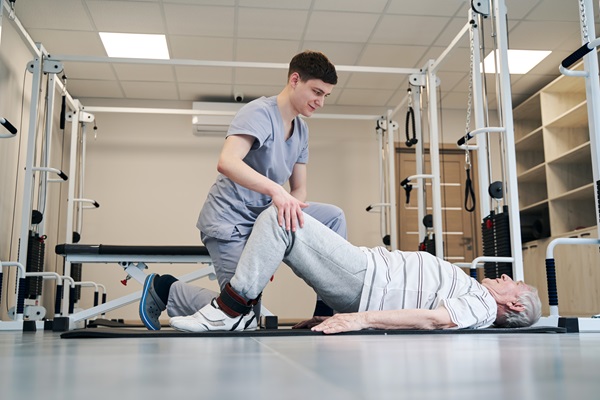When Post Operative Physical Therapy Is Necessary

Recovery after an operation is essential to the outcome of the procedure. In some cases, patients may need physical therapy to regain their strength, mobility, and independence. There are several situations where a person may need physical therapy following their operation. Understanding these situations can help you prepare for your recovery and ensure that you receive the care and support you need. This article will explore these scenarios and what you can expect from physical therapy after a surgical procedure.
When post-operative physical therapy is necessary
Joint replacement surgery
One common situation in which a person may need physical therapy after surgery is following a joint replacement. Joint replacement surgery is typically performed on patients with severe joint damage or degeneration due to arthritis. A joint replacement surgery can significantly improve a patient's quality of life, but it is also a major surgical procedure requiring significant rehabilitation.
Physical therapy after joint replacement surgery can help patients regain strength, mobility, and range of motion. This treatment plan may involve exercises to strengthen the muscles surrounding the joint and stretching and flexibility exercises to improve mobility. Physical therapists may also use specialized techniques, such as manual or aquatic therapy, to help patients recover more quickly and comfortably.
Spinal surgery
Another situation in which a person may need physical therapy after surgery is following spinal surgery. Spinal surgery is typically performed to address conditions such as herniated discs, spinal stenosis, or spinal fractures. Depending on the specific type of surgery, patients may need to undergo physical therapy to help them regain their mobility and function.
Physical therapy after spinal surgery may involve exercises to improve strength, flexibility, and range of motion. Patients may also need to learn how to perform activities of daily living, such as getting in and out of bed or walking, without worsening their symptoms. Physical therapists may also use ultrasound or electrical stimulation methods to help patients recover more quickly and comfortably.
Post-operative complications
Sometimes, a person may need physical therapy after surgery to address complications that arise during or after the procedure. For example, patients who develop post-operative infections or blood clots may need physical therapy to help them recover from these conditions. In addition, physical therapists may use specialized techniques such as lymphatic drainage or compression therapy to help patients manage these conditions and recover from them.
Preoperative issues
An individual may need physical therapy after surgery to address chronic pain or mobility issues that were present before the surgery. It is likely part of their customized treatment plan following their initial consultation. For example, patients with chronic back pain may need physical therapy after surgery to help them regain their strength and mobility and manage their pain more effectively. Physical therapists can work with patients to ensure that the treatment plan addresses their needs and helps them achieve their goals.
Ready to learn more?
Physical therapy is essential to a positive outcome following a surgical procedure. You may need physical therapy after your operation in many different situations. By working with an experienced physical therapist, you can ensure that you receive the care and support you need to recover fully. If you have questions about post-operative physical therapy, call our office to schedule a consultation.
Request an appointment at Orange County Physical Therapy OCPT at our Newport Beach office by visiting https://ocptclinic.com or calling (949) 299-0297.
Check out what others are saying about our services on Yelp: Physical Therapy in Newport Beach, CA.
Related Posts
Massage therapy is widely known for its therapeutic benefits, particularly when administered by an experienced physical therapist. Physical therapists have a unique understanding of musculoskeletal anatomy and movement and can utilize massage therapy to help patients recover. This approach, also known as physical therapy massage, reduces pain and improves overall physical health.According to the National…
Cycling performance therapy can be an important resource for athletes seeking to improve efficiency, prevent injuries, and recover from physical strain. This specialized approach, provided by a physical therapist, addresses the unique biomechanical demands of cycling while promoting long-term musculoskeletal health. Cycling performance therapy is a targeted program designed to improve a cyclist's endurance, strength, and…
Physiotherapy is a medical term that refers to physical therapy. Many individuals are familiar with physical therapy due to the common need for it among sports players and individuals who may have gotten injured or experienced a chronic illness.There is also a common misconception that physiotherapy is only needed when it comes to rehabilitating a…
Hip pain can be a debilitating condition that affects your daily activities and overall quality of life. Seeking hip pain treatment from a physical therapist when it first appears can prevent further complications and improve your health and well-being. Here are four main benefits of early hip pain treatment.Early hip pain treatment can prevent further…
